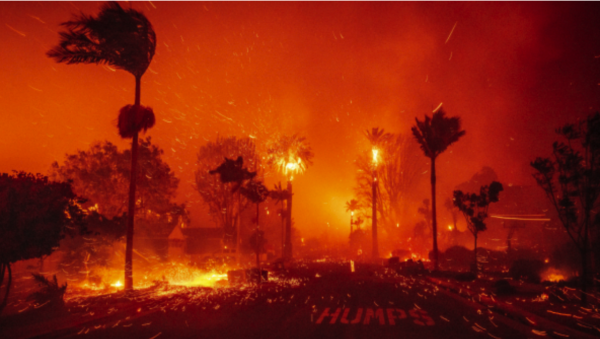Global JanTerms extend campus learning opportunities
During the month of January, Westminster’s campus expanded from the 180-acre plot of land nestled comfortably in Atlanta to a global learning experience stretching 6500 miles to Israel, 8000 miles to Kenya, and several hundred miles to Washington D.C., Los Angeles, and other locations in the Southeast. Three intriguing traveling JanTerms featured this year included two new courses, Civil Rights and Cinema: American Activism, and Film and Global Education: Documentary Film and the Holy Land, and an exchange program to Mount Kenya Academy.
The Civil Rights and Cinema course taught by David Dwyer and Judy Osborne focused on the struggle for civil rights in the United States and explored global, social, and political activism. Students in the class watched movies about civil rights and race issues from different perspectives such as the 1915 pro-Klan silent film The Birth of a Nation and the newly released and horror movie Get Out.
As described by Westminster online, the course’s goal was to “gain a clearer understanding of how to deeply engage with film and one another through the lens of race, class, and gender.”
In addition to watching films and discussing implication, the 16-student class traveled to Washington, D.C., from Jan. 10 to Jan. 13 to visit the recently opened National Museum of African American History and Culture and the United States Holocaust Memorial Museum. The class culminated in a research paper and video centered around analysis of a film and the course’s guiding questions, which dig deeper into what constitutes the social and civil rights movement, the story of American civil rights, and the connections between film and creating social consciousness.
Senior Kelsey Russell signed up for the JanTerm class as a followup to her Civil Rights class during the first semester.
“Coming away from the trip, I see myself more aware of the impact Atlanta has on civil rights because of the movies we watched,” said Russell. “I am also understanding that especially when it comes to film techniques, every aspect of a movie is chosen for a reason and nothing is random because film is a form of art.”
While students in the Civil Rights and Cinema JanTerm explored social issues and film culture surrounding America, and, more specifically, Georgia, another group of students, those in the Documentary Film and the Holy Land class taught by Reverend David Charney and history teacher John Terry, worked with film and culture in Israel, the origin of three monotheistic faiths. Through the 11-day trip, they visited three holy sites: Capernaum, Masada, and the Church of the Holy Sepulchre. Each of three four-person groups were responsible for filming a 10 to 12-minute documentary at one of the holy sites. The resulting documentaries will be archived for use in future bible classes to more realistically portray Israel.
“My group’s [holy site] is Capernaum which is an ancient fishing village where Jesus gathered his disciples and gave some of his first sermons,” said senior Emma Tordella. “We’re following in the footsteps of Jesus and are creating a documentary of what the place was to Jesus during his time in addition to what it’s used for now and all its significance Biblically, historically, and archaeologically. It’s really cool to discover how much it’s been destroyed, excavated, and rebuilt.”
Despite the appeal of a travel component, some students remained anxious about traveling to the Middle East in the midst of the current political climate.
“Since President Trump recently made the announcement that Jerusalem is the capital of Israel, there have been some protests, although everyone says it’s




